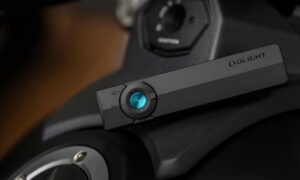Do you find it challenging to reach professional-level live streaming standards?
The primary factor separating amateur streams from professional ones lies in the quality of your equipment setup. The correct broadcasting equipment solutions enable significant enhancements to your stream quality and viewer engagement levels.
Let me show you how…
Inside This Guide:
- Understanding Live Streaming Equipment Essentials
- Key Components for Professional Streaming
- How to Choose the Right Equipment
- Setting Up Your Streaming Infrastructure
- Common Equipment Mistakes to Avoid
The demand for quality streaming equipment has escalated to new heights due to the rapid expansion of the live streaming industry.
The live streaming industry is undergoing rapid expansion. By the close of 2021 live streaming in the US achieved a market value of $11 billion while expected to expand to $25 billion by the year 2023.
This surge in popularity means one thing:
Currently viewers demand better streaming quality than they ever have before.
In Q2 2021 audiences consumed nearly 9 billion hours of live streaming content which represented a 2.5% increase compared to the previous quarter. The pandemic resulted in 24% of US internet users increasing their live streaming consumption.
The tremendous increase in audience size has intensified competition among content creators. To differentiate yourself you need high-grade equipment that provides consistent quality streaming.
Essential Equipment for Professional-Grade Streaming
We will now examine the essential components required to create a professional streaming setup. Leading manufacturers including Thor Broadcast have created broadcasting equipment solutions capable of managing tasks from video capture to stream delivery.
Here are the key pieces you need:
Professional Cameras
The quality of your video output begins with your camera choice. Key features to look for:
- 1080p or 4K resolution capability
- Multiple output options (HDMI, SDI)
- Low-light performance
- Professional audio inputs
- Extended recording capabilities
Audio Equipment
Subpar sound quality has the potential to destroy the excellence of an otherwise flawless streaming session. Essential audio gear includes:
- XLR microphones
- Audio interface or mixer
- Acoustic treatment
- Monitoring headphones
- Audio processors for consistent levels
Capture and Encoding Devices
The crucial elements required to transform raw audio and video data into a format suitable for streaming include video capture cards and hardware encoders.
- Video capture cards
- Hardware encoders
- Stream processors
- Format converters
- Distribution amplifiers
Professional-grade capture and encoding devices preserve your stream quality at every stage of the pipeline. Streaming problems frequently arise from substandard encoding processes and capture devices that fail to meet live broadcasting requirements. The use of high-quality encoding equipment is essential for achieving steady stream quality and avoiding buffering or pixelation problems which can result in viewer loss.
Lighting Equipment
What differentiates amateur streams from professional broadcasts?
Lighting.
Professional lighting leads to remarkable improvements in stream quality because:
- Ensuring clear, crisp video
- Creating professional atmosphere
- Reducing camera noise
- Maintaining consistent quality
- Enhancing production value
Professional streaming setups require these essential lighting components to function properly.
- Key light for primary illumination
- Fill light to soften shadows
- Back light for depth
- Color-accurate light panels
- Dimming and control options
Building Your Professional Streaming Infrastructure
Your streaming equipment depends entirely on the quality of the supporting infrastructure. We will now identify the basic parts needed for a trustworthy streaming setup:
Network Equipment
A reliable network connection forms the essential foundation of every successful streaming session. Here’s what you need:
- Dedicated internet line
- Professional-grade router
- Managed network switches
- Redundant connections
- Quality of Service (QoS) settings
A stream drop due to network problems is your worst nightmare. Professional broadcasters maintain backup connections along with well-managed network infrastructure to ensure reliable operation.
Power Management
Here’s something many streamers overlook:
For professional streaming to operate smoothly uninterrupted power supply remains a critical necessity. One power failure can shut down your entire streaming broadcast. That’s why you need:
- Uninterruptible Power Supply (UPS)
- Power conditioning equipment
- Proper surge protection
- Cable management systems
- Dedicated power circuits
No matter how costly your streaming hardware is it will fail to deliver value during essential broadcasts if power inconsistencies cause disruptions.
Monitoring and Control
Professional streams require professional monitoring. Professional streaming requires you to view what your audience sees so that you can manage your broadcast effectively.
- Multi-view monitoring displays
- Professional waveform monitors
- Audio level meters
- Stream health analytics
- Remote control capabilities
Without proper monitoring, you’re essentially broadcasting blind. Viewers will only alert you to quality problems when they complain which means that your ability to fix the problem becomes impossible.
Common Equipment Mistakes to Avoid
What factors make successful streamers stand out from those who face difficulties?
Avoiding these essential equipment errors makes the difference for successful streaming.
Skimping on Critical Components
I continuously observe that streamers attempt to reduce expenses by investing less in essential equipment. But here’s the truth:
- Low-quality cameras produce poor video
- Cheap microphones create audio issues
- Budget encoders cause stream problems
- Basic lighting looks unprofessional
- Inferior network equipment fails regularly
Remember: Investing in professional equipment ensures your stream achieves success. The financial consequences of losing viewers due to poor quality exceed the expense of investing in appropriate equipment.
Ignoring Backup Systems
Here’s another costly mistake:
Not having backup equipment ready to go. Professional broadcasters always have:
- Spare cameras and lenses
- Backup microphones
- Alternative encoding paths
- Secondary lighting
- Redundant power supplies
Immediate backups during live streams will save broadcasts when equipment unexpectedly fails. Audience retention becomes impossible without backup systems.
Poor Cable Management
Want to know another silent stream killer?
Messy cables.
Messy cable management goes beyond appearance as it leads to signal interference and equipment failures.
- Signal interference
- Connection failures
- Safety hazards
- Equipment damage
- Troubleshooting nightmares
Professional broadcasters always:
- Label every cable clearly
- Use proper cable routing
- Install strain relief
- Keep cables organized
- Perform regular maintenance
Maintaining Your Streaming Equipment
Even the best equipment needs proper care. Maintain your equipment’s optimal performance through these tips.
Regular Maintenance Schedule
Create a maintenance routine that includes:
- Weekly equipment checks
- Monthly deep cleaning
- Quarterly calibration
- Semi-annual upgrades
- Annual infrastructure review
By using preventive maintenance you can avoid interruptions and maintain smooth streaming operations.
Documentation is Key
Keep detailed records of:
- Equipment settings
- Network configurations
- Maintenance history
- Troubleshooting steps
- Emergency procedures
This documentation becomes invaluable when:
- Training new team members
- Troubleshooting issues
- Upgrading equipment
- Planning improvements
- Handling emergencies
Capture and Encoding Devices
These components are essential to transform raw audio/video into content that can be streamed.
- Video capture cards
- Hardware encoders
- Stream processors
- Format converters
- Distribution amplifiers
Lighting Equipment
Proper lighting dramatically improves stream quality:
- Key light
- Fill light
- Back light
- Light modifiers
- Color temperature controls
Building Your Professional Streaming Infrastructure
A reliable streaming setup depends on thorough planning combined with appropriate infrastructure components.
Network Equipment
Your network is crucial for stable streams:
- Dedicated internet connection
- Professional router
- Network switches
- Redundant connections
- Quality of Service (QoS) settings
Power Management
Clean, reliable power keeps your stream running:
- UPS backup systems
- Power conditioners
- Surge protection
- Cable management
- Proper grounding
Monitoring and Control
Professional monitoring ensures quality:
- Multiview displays
- Waveform monitors
- Audio meters
- Stream analytics
- Remote management tools
Common Equipment Mistakes to Avoid
During your streaming setup construction phase make sure to avoid these typical mistakes.
Skimping on Critical Components
Don’t try to save money on:
- Cameras
- Encoders
- Network equipment
- Audio gear
- Lighting systems
Professional equipment expenses directly contribute to the quality of your streaming services.
Ignoring Backup Systems
Always have redundancy for:
- Internet connections
- Power supplies
- Encoding devices
- Storage systems
- Control interfaces
Poor Cable Management
Proper cabling is essential:
- Use high-quality cables
- Label everything clearly
- Create proper cable runs
- Implement strain relief
- Regular maintenance checks
Maximizing Your Equipment’s Potential
High-quality equipment requires proper configuration and regular maintenance to function effectively.
Regular Maintenance
Keep your gear performing optimally:
- Clean optical elements
- Update firmware
- Check connections
- Test backup systems
- Calibrate displays
Proper Training
Ensure your team knows how to:
- Operate all equipment
- Troubleshoot issues
- Perform basic maintenance
- Handle emergencies
- Optimize settings
Documentation
Maintain detailed records of:
- Equipment settings
- Network configurations
- Maintenance schedules
- Troubleshooting procedures
- Emergency protocols
Future-Proofing Your Setup
The streaming industry evolves rapidly. Plan for the future with:
Scalable Solutions
Choose equipment that:
- Supports upgrades
- Has expansion options
- Offers modular design
- Provides future formats
- Enables new features
Technology Trends
Stay current with emerging:
- Encoding standards
- Network protocols
- Quality metrics
- Format requirements
- Industry practices
Next Steps to Improve Your Stream
Ready to upgrade your streaming quality? Here’s your action plan:
- Audit your current equipment
- Identify critical upgrades needed
- Research professional solutions
- Create an upgrade budget
- Implement changes systematically
Let’s Wrap This Up
Quality live streaming experiences that satisfy viewer demands require essential professional broadcasting equipment solutions. The live streaming market is expected to grow to $25 billion by 2023 so investing in quality equipment becomes essential for successful operations.
Remember:
- Choose professional-grade equipment
- Build reliable infrastructure
- Implement proper maintenance
- Plan for future upgrades
- Stay current with technology
When you stick to these guidelines and choose superior broadcasting gear you will establish yourself to produce professional-level streams which will both captivate your audience and help it expand.


































